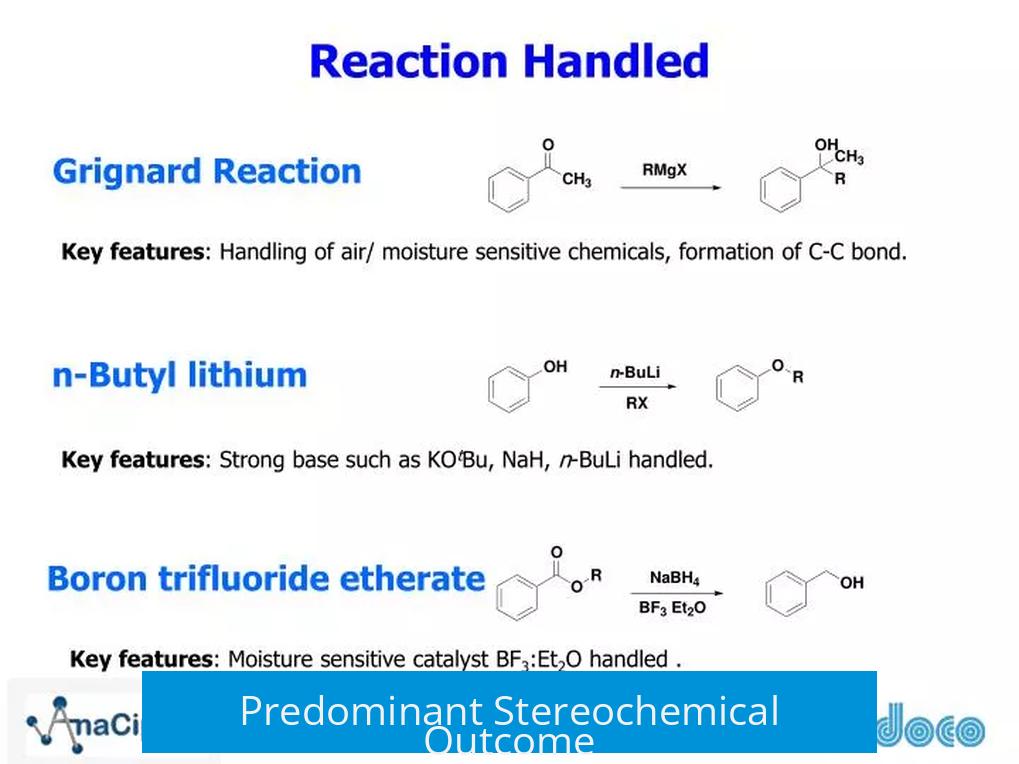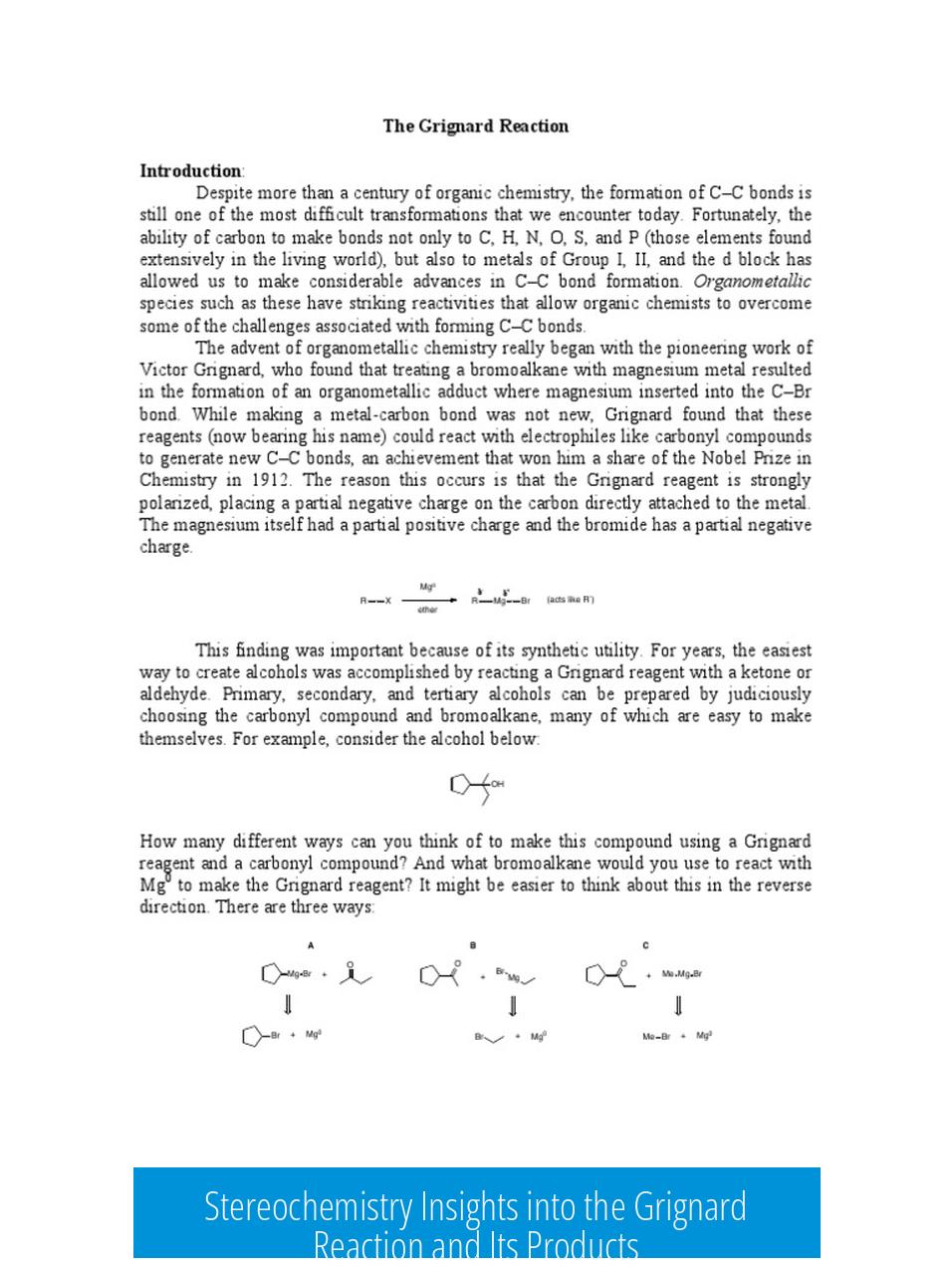Understanding Stereochemistry in the Grignard Reaction

The Grignard reaction can involve stereochemistry both during the reaction and in the products formed, depending on the substrates used. This reaction typically involves an organomagnesium halide, such as methylmagnesium iodide (MeMgI), reacting with a carbonyl compound.
Mechanism and Stereochemical Considerations
The Grignard reagent attacks the electrophilic carbon atom in the carbonyl group. This carbon is typically planar and sp2 hybridized. The nucleophilic addition creates a new stereocenter if the carbonyl carbon is attached to different substituents.
In the case of a prochiral ketone or aldehyde, the nucleophilic attack can occur from either face of the planar carbonyl group. This leads to the formation of two possible stereoisomers (enantiomers or diastereomers) in roughly equal amounts, unless stereochemical control or chiral auxiliaries are present.
Predominant Stereochemical Outcome

- For achiral reactants and no chiral catalysts, a racemic mixture forms.
- If the starting material or reagent is chiral, or if special conditions are used, stereoselective or stereospecific products can arise.
- Without stereochemical control, the major product reflects a roughly 50:50 ratio of stereoisomers.
Products and Byproducts
The main product of the Grignard reaction with carbonyl compounds is an alcohol after aqueous work-up:
- The Grignard reagent (e.g., MeMgI) adds to the carbonyl, forming a magnesium alkoxide intermediate.
- Aqueous acid or water protonates the intermediate to yield the alcohol.
Other than the desired alcohol and water from the hydrolysis step, side products are usually minimal if the reaction is conducted properly. Incomplete reactions may leave unreacted reagents, or side reactions can form if impurities exist.
Use of Ultrasound Bath
An ultrasound bath can enhance the Grignard reaction by improving mixing and contact between reagents, increasing reaction rates. It may also help in breaking down possible aggregates of the Grignard reagent, improving yield and reproducibility.
Summary of Key Points
- The Grignard reaction creates stereocenters when the carbonyl carbon is prochiral.
- Nucleophilic attack usually results in racemic mixtures unless stereocontrol is implemented.
- The main product is an alcohol formed after hydrolysis of the magnesium alkoxide intermediate.
- Additional products beyond alcohol and water are generally not significant in a clean reaction.
- Ultrasound baths can improve reaction efficiency and reproducibility.
Does the Grignard reaction involve stereochemistry in the products?
Yes. The Grignard reaction can affect stereochemistry depending on the substrate. When forming chiral centers, products may have specific stereochemical configurations. The reaction often leads to racemic mixtures if no chiral influences are present.
What is the typical stereochemical outcome when using MeMgI in a Grignard reaction?
MeMgI adds as a nucleophile to electrophilic centers, such as carbonyls. The product’s stereochemistry depends on the starting material. Usually, a major stereoisomer forms, but mixtures are common unless controlled conditions are used.
Are there multiple products formed besides the main alcohol and water?
The main products are the desired alcohol and water as byproducts. Minor side products can occur if impurities or side reactions happen. Generally, no significant other products form under proper conditions.
How does an ultrasound bath aid the Grignard reaction?
Ultrasound can improve mixing and increase reaction rates. It may also enhance the formation of the Grignard reagent. Using an ultrasound bath often results in better yield and consistency.





Leave a Comment